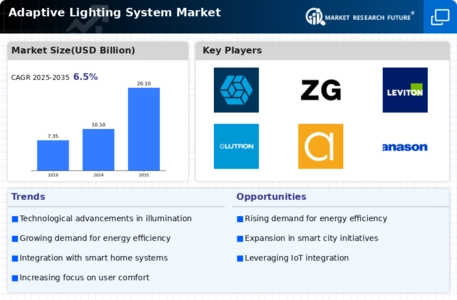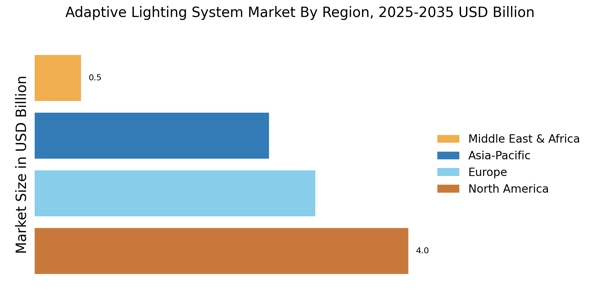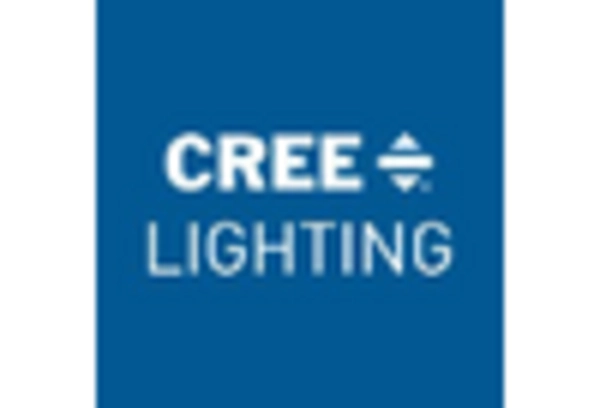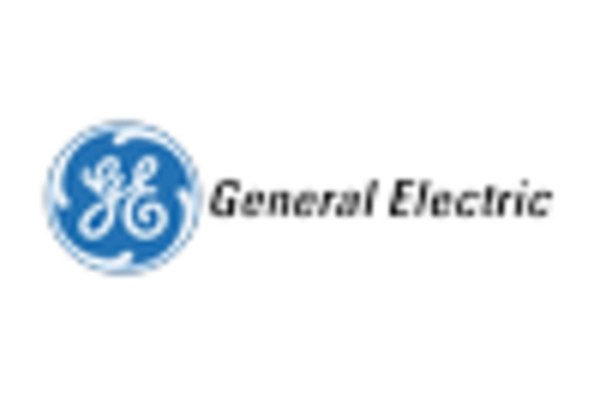Growing Demand for Smart Cities
The increasing trend towards the development of smart cities is a pivotal driver for the Adaptive Lighting System Market. As urban areas expand, the need for efficient and intelligent lighting solutions becomes paramount. Smart city initiatives often incorporate adaptive lighting systems to enhance public safety, reduce energy consumption, and improve the overall quality of life for residents. According to recent estimates, the smart city market is projected to reach substantial figures, indicating a robust demand for integrated technologies, including adaptive lighting. This trend suggests that municipalities are likely to invest in advanced lighting solutions that can adapt to real-time conditions, thereby fostering a more sustainable urban environment.
Increased Focus on Sustainability
The heightened emphasis on sustainability is a significant driver for the Adaptive Lighting System Market. As environmental concerns gain traction, both consumers and businesses are seeking solutions that minimize ecological footprints. Adaptive lighting systems, which can significantly reduce energy consumption and carbon emissions, align well with these sustainability goals. Market analysis suggests that the demand for eco-friendly lighting solutions is on the rise, with many organizations committing to sustainability initiatives. This trend indicates that adaptive lighting systems are not only a practical choice but also a strategic investment for companies aiming to enhance their environmental responsibility.
Regulatory Support for Energy Efficiency
Regulatory frameworks aimed at promoting energy efficiency are significantly influencing the Adaptive Lighting System Market. Governments worldwide are implementing stringent regulations to reduce energy consumption and greenhouse gas emissions. These regulations often encourage the adoption of adaptive lighting systems, which can adjust brightness based on environmental conditions and occupancy. For instance, energy efficiency standards have been established in various regions, mandating the use of energy-saving technologies in public infrastructure. This regulatory support not only drives market growth but also aligns with global sustainability goals, making adaptive lighting systems an attractive option for municipalities and businesses alike.
Technological Advancements in Lighting Solutions
Technological advancements are a crucial driver for the Adaptive Lighting System Market. Innovations in LED technology, sensor integration, and IoT connectivity are transforming traditional lighting systems into adaptive solutions that offer enhanced functionality. The integration of smart sensors allows lighting systems to respond dynamically to changes in ambient light and human presence, thereby optimizing energy usage. Market data indicates that the LED segment is expected to dominate the adaptive lighting market, driven by its energy efficiency and longevity. As technology continues to evolve, the capabilities of adaptive lighting systems are likely to expand, further propelling market growth.
Rising Urbanization and Infrastructure Development
The ongoing trend of urbanization and infrastructure development is a key driver for the Adaptive Lighting System Market. As populations migrate towards urban centers, the demand for efficient and effective lighting solutions in public spaces, roadways, and commercial areas increases. Urban planners and developers are increasingly recognizing the benefits of adaptive lighting systems, which can enhance safety and reduce operational costs. Market projections indicate that the urban infrastructure sector is poised for growth, thereby creating opportunities for adaptive lighting solutions. This trend suggests that as cities evolve, the integration of adaptive lighting will become essential for modern urban environments.


















Leave a Comment